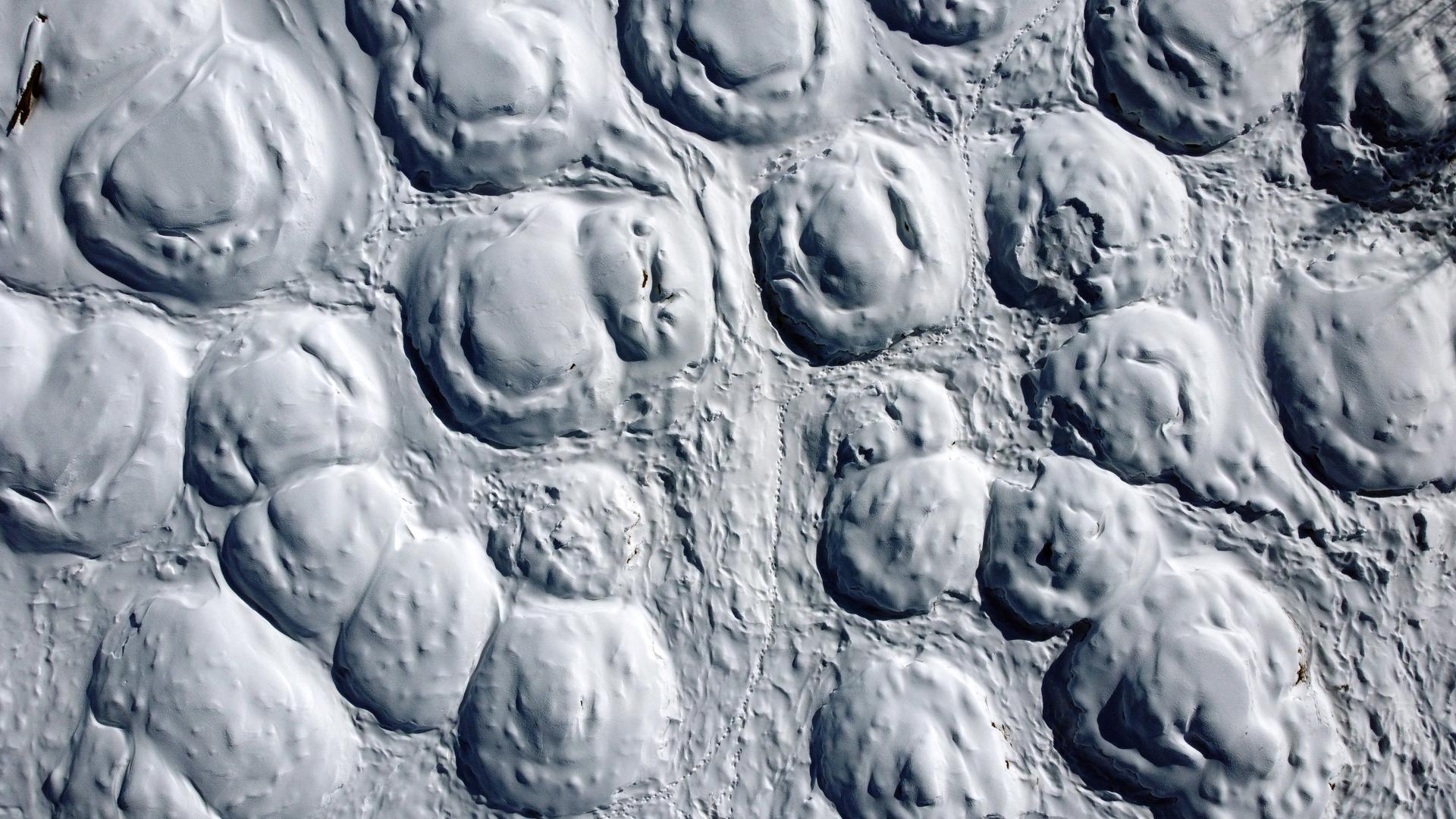In Siberian winter, strange snow humps appear after accelerated thawing of permafrost

In the white vastness of this corner of Siberia, the fields are carpeted with bumps that look like snow-covered buns, shapes due to the increasingly rapid thawing of the permafrost which reshapes the landscape, makes houses collapse and releases more greenhouse gases .
At the end of March, it is -20°C and the rural landscape of Yakutia, in the Russian Far East, is saturated with these mounds formed by a process called "thermokarst". The polygons, called "bylars" in the Yakut language, are more than a meter high and have almost regular shapes.
They are not new, but they are multiplying thanks to climate change and the accelerated thawing of permafrost, this theoretically perpetually frozen ground also called "permafrost" , explains Nikita Tananaev, director of the climate laboratory at the Northeastern Federal University in Yakutsk, the capital of Yakutia, a vast region almost entirely covered by permafrost.
"The tops of these formations remain stable. Only the spaces between the mounds are sinking," he continues. Because the melting underground ice is arranged in polygons, it's the thawing that creates the bumps. "And with global warming, the ice is melting faster and faster."
The mounds are spreading even into cities. In the village of Churapcha, 135 kilometers from Yakutsk, Innokenti Posselski's land had 20 humps when he bought it last year to build his house. "About 40 years ago, there was an airfield here and the land was quite flat," he explains. "Over the last 40 years, we've started to see this landscape become more humped. It's like that everywhere here."

The young man has only leveled half of his land so far. His house stands on stilts buried deep in the permafrost, like all the buildings in the region. In Yakutia, whether residential or commercial, almost all buildings are supported by piles that extend several meters into the frozen ground. But the prolonged thaw is already having very visible consequences: in Yakutsk, the walls of some buildings are sagging and cracking.
Mikhail Kuznetsov, head of the Federal Agency for the Development of the Russian East, stated in 2024 that "more than 40%" of buildings located in permafrost zones – which cover 65% of Russia – were deformed due to thawing . The blame lies with rising average temperatures, which have climbed by "1.5°C over the past 30 years" in Yakutia and "even up to 2°C in some places," according to Nikita Tananaev of the climate laboratory in Yakutsk.

As proof: it was -8°C in January in Yakutsk, "the highest temperature ever observed" in January in this region where the thermometer drops on average to -40°C during the first month of the year.
These figures reflect statistics from global observatories: the last two years – 2023 and 2024 – were the hottest ever recorded , and arguably the hottest on Earth for 120,000 years, according to "climate archives" such as ice cores. This warming is largely caused by the burning of fossil fuels, with Russia also being the world's fifth-largest emitter of greenhouse gases.
Viruses and bacteria"A difference of one or two degrees Celsius, even if the temperatures are below zero, is very important in scientific terms, because the permafrost does not freeze as deeply as usual," explains Alexander Makarov, director of the Arctic and Antarctic Research Institute in St. Petersburg. To understand the scale of the problem, the institute has deployed 78 permafrost thawing observation wells in 12 regions of Russia over the past two years. It plans to eventually install 140.

But the thaw also releases more carbon dioxide ( CO2 ) and methane, two greenhouse gases trapped in the ice for millennia. This phenomenon fuels a vicious circle by exacerbating global warming, thereby accelerating the thawing of permafrost.
Beyond its climatic effects, the thawing of permafrost, which harbors sometimes forgotten bacteria and viruses, poses a health threat. In 2016, a child died in Siberia from anthrax, a disease that had disappeared from the region for seventy-five years. Scientists believe the cause most likely originated from the thawing of a reindeer carcass that had died of anthrax several decades earlier. Once released, the deadly bacteria, which persists in the permafrost for more than a century, reinfected herds.





